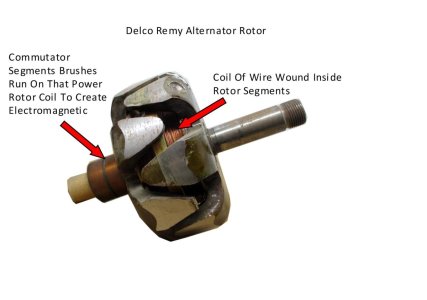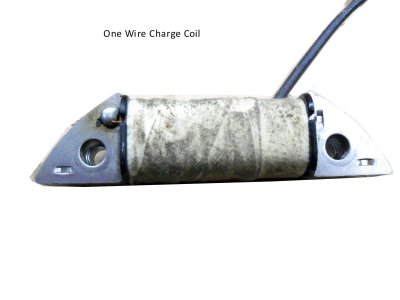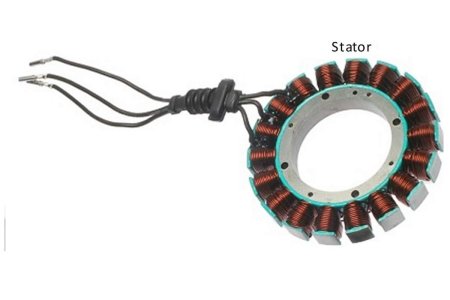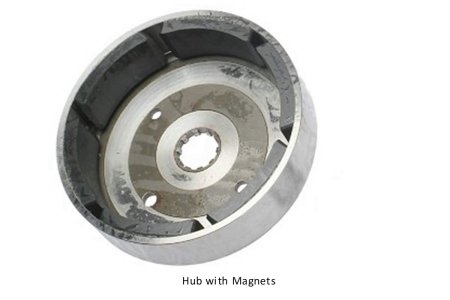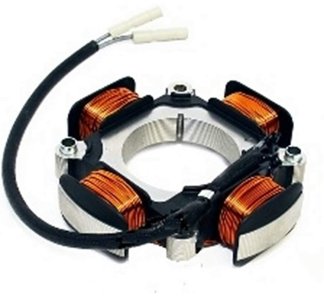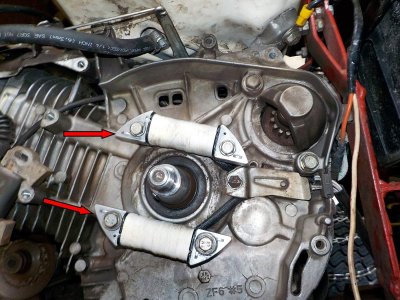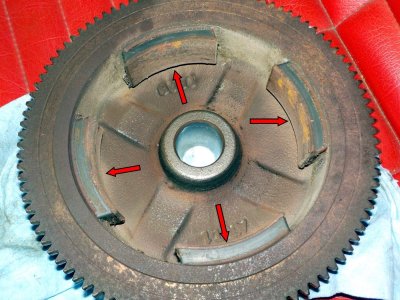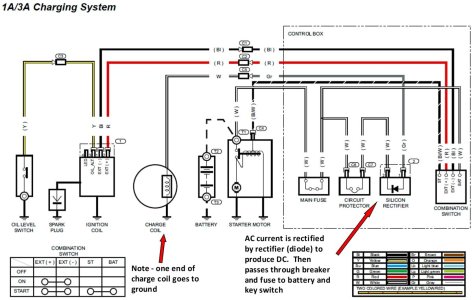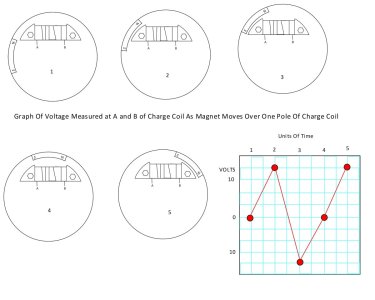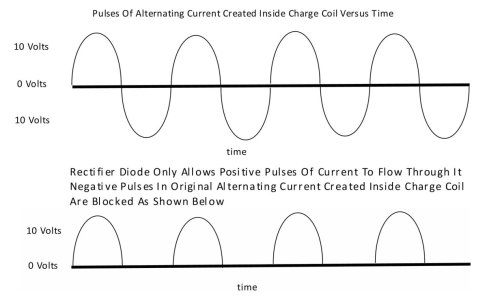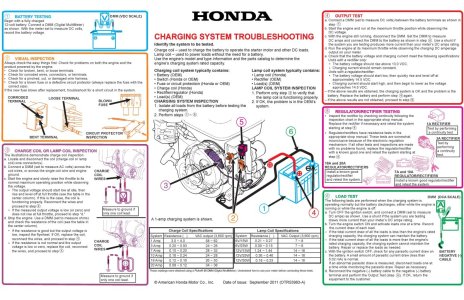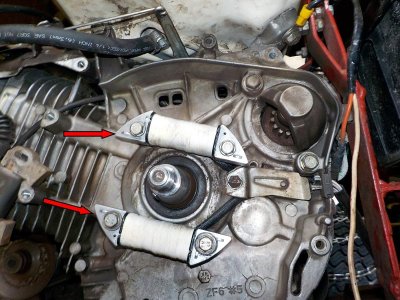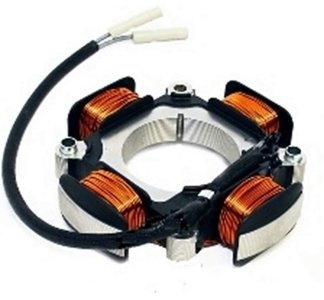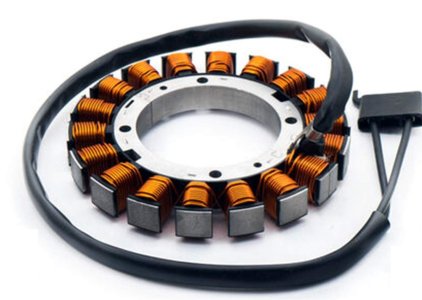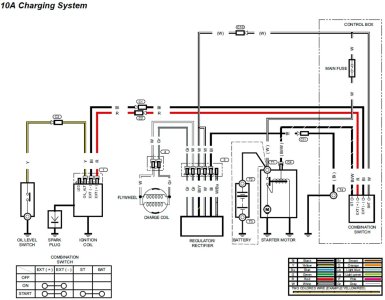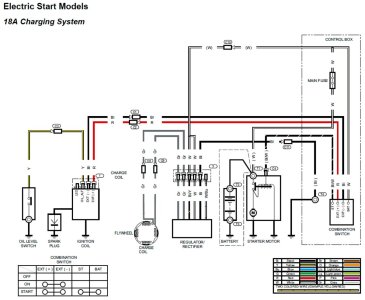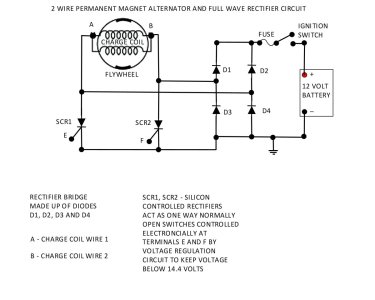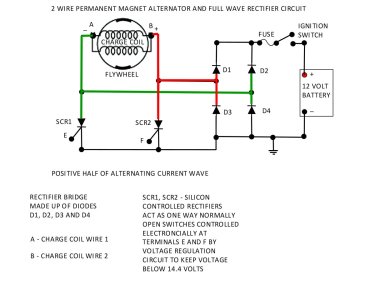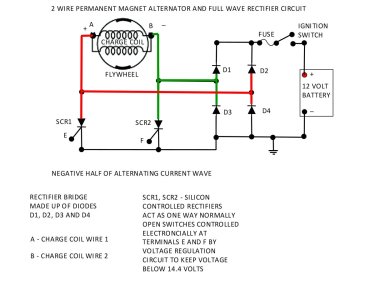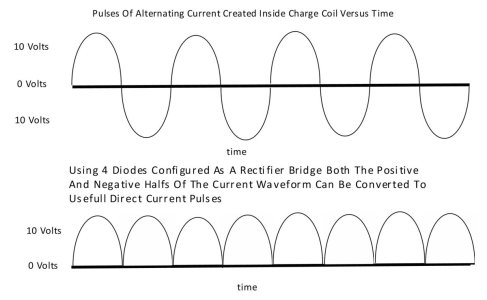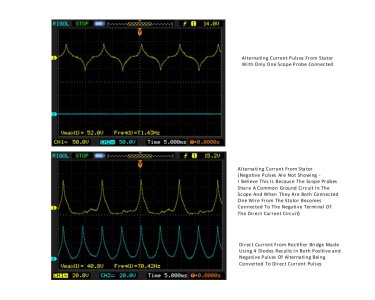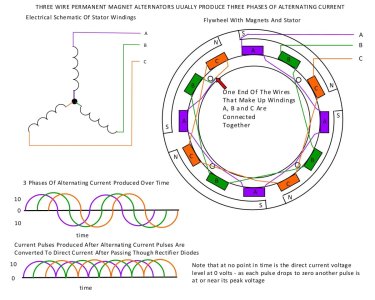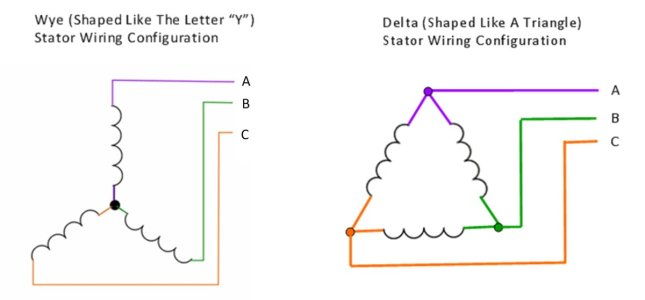In hopes of taking some of the mystery out of Permanent Magnet charging systems as to how they work and some general testing information I have decided to start a thread and share some of my knowledge on them that may help other members. I am by no means an electronics expert and if I post something that is incorrect or does not make sense please correct me or ask questions as that is how we all learn. It is my hope to keep the use of technical terms and in depth information to a minimum so that the reader does not feel overwhelmed or loose interest while reading this thread.
Please note all information in this document is presented as is – USE AT YOUR OWN RISK AND EXPENSE
Small engine Permanent Magnet Alternators which are commonly found on small engines such as may be encountered on most lawn and garden tractors since about the mid 1970’s perform the useful task of providing electricity to recharge and maintain a 12 volt battery as well as power lights, PTO clutches and other 12 volt electrical items. They usually consist of a flywheel with permanent magnets mounted inside, a stator or charge coil (or coils) which remains stationery and is bolted to the engine block and a rectifier / regulator or diode to provide rectification so that the alternating current being produced is converted to direct current and controlled so the voltage level does not rise above a preset level. It is my hope that by talking about the components and how they work together I can remove some of the mystery surrounding them while keeping the technical information and terminology needed to understand the system to a minimum.
Let us start this journey with the basic physical principle that by moving a permanent magnet placed physically close to a coil of wire a current inside the wire will be produced that can be used to generate electricity. If the two ends of the coil of wire are connected to a load such as a light bulb by using two jumper wires current will flow through the circuit and the bulb will try to light. Of course there are some other factors such as the amount of current and the voltage level in the circuit which will determine how brightly or dimly the light bulb illuminates and for how long before it burns out.
OK, I have used some words that may need explaining to some people so rather than carrying on and loosing the reader lets do that. For those readers that know what all the words mean (or think they do) – you can proceed to the next paragraph if you wish. A permanent magnet is a piece of ore or other material that exhibits a magnetic force that attracts (or repels) it to other magnetic objects – a magnet you might be familiar with is a refrigerator door magnet. A magnet can also be created by passing an electric current through a coil of wire wound around an iron object such as a nail – these are referred to as electromagnets. In a PM (Permanent Magnet) alternator a coil of wire can be one or multiple coils of wire connected together in series or parallel to form a stator or charge coil (or coils). The wire is usually copper and wrapped around but insulated from an iron laminated core frame – the laminated core helps with keeping eddy currents from forming which can create heat and aids in making sure the maximum amount of current is produced in the coil of wire as the magnet passes near it. A circuit is formed by connecting two or more conductors (wires) to a current source (in our case the coil of wire) and a load (in our case the light bulb) such that there is a circular path through which a current can flow. Current is the movement (or flow) of an electric charge – in simple terms it is the part of electricity that performs the work and is measured in amps. Current flow in an electrical circuit can be compared to the amount of water that flows through a pipe in a water system during a given amount of time. Voltage is the potential difference between two points in an electrical circuit and is measured in volts. Voltage can be compared to the amount of pressure at two different points in a water pipe as the water flows. A load can be anything that can be connected to an electrical circuit to convert electricity into light, heat, motion etc. – a light bulb, a starter motor, a heating pad in a car seat are all examples of a load. Hopefully this explains all the words that may appear to be mysterious – if not please feel free to ask and I will attempt to do a better job.
Please note all information in this document is presented as is – USE AT YOUR OWN RISK AND EXPENSE
Small engine Permanent Magnet Alternators which are commonly found on small engines such as may be encountered on most lawn and garden tractors since about the mid 1970’s perform the useful task of providing electricity to recharge and maintain a 12 volt battery as well as power lights, PTO clutches and other 12 volt electrical items. They usually consist of a flywheel with permanent magnets mounted inside, a stator or charge coil (or coils) which remains stationery and is bolted to the engine block and a rectifier / regulator or diode to provide rectification so that the alternating current being produced is converted to direct current and controlled so the voltage level does not rise above a preset level. It is my hope that by talking about the components and how they work together I can remove some of the mystery surrounding them while keeping the technical information and terminology needed to understand the system to a minimum.
Let us start this journey with the basic physical principle that by moving a permanent magnet placed physically close to a coil of wire a current inside the wire will be produced that can be used to generate electricity. If the two ends of the coil of wire are connected to a load such as a light bulb by using two jumper wires current will flow through the circuit and the bulb will try to light. Of course there are some other factors such as the amount of current and the voltage level in the circuit which will determine how brightly or dimly the light bulb illuminates and for how long before it burns out.
OK, I have used some words that may need explaining to some people so rather than carrying on and loosing the reader lets do that. For those readers that know what all the words mean (or think they do) – you can proceed to the next paragraph if you wish. A permanent magnet is a piece of ore or other material that exhibits a magnetic force that attracts (or repels) it to other magnetic objects – a magnet you might be familiar with is a refrigerator door magnet. A magnet can also be created by passing an electric current through a coil of wire wound around an iron object such as a nail – these are referred to as electromagnets. In a PM (Permanent Magnet) alternator a coil of wire can be one or multiple coils of wire connected together in series or parallel to form a stator or charge coil (or coils). The wire is usually copper and wrapped around but insulated from an iron laminated core frame – the laminated core helps with keeping eddy currents from forming which can create heat and aids in making sure the maximum amount of current is produced in the coil of wire as the magnet passes near it. A circuit is formed by connecting two or more conductors (wires) to a current source (in our case the coil of wire) and a load (in our case the light bulb) such that there is a circular path through which a current can flow. Current is the movement (or flow) of an electric charge – in simple terms it is the part of electricity that performs the work and is measured in amps. Current flow in an electrical circuit can be compared to the amount of water that flows through a pipe in a water system during a given amount of time. Voltage is the potential difference between two points in an electrical circuit and is measured in volts. Voltage can be compared to the amount of pressure at two different points in a water pipe as the water flows. A load can be anything that can be connected to an electrical circuit to convert electricity into light, heat, motion etc. – a light bulb, a starter motor, a heating pad in a car seat are all examples of a load. Hopefully this explains all the words that may appear to be mysterious – if not please feel free to ask and I will attempt to do a better job.

